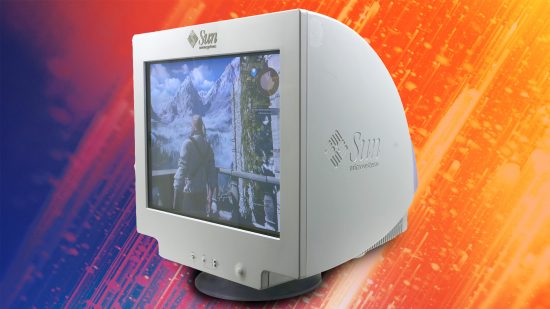Cathode ray tubes (CRTs) were once the one and only option for computer monitors. The hulking great things took up masses of space on desks across the land before the arrival of flatscreen display technologies saw them rapidly consigned to history.
However, in retro gaming circles, it has long been held that the CRT screen is still the best way to play certain games, and more recently we’ve seen talk of a growing wave of appreciation for playing modern games on CRTs too. So, to see what all the fuss is about, we took a step back in time to find out just what, if anything, we’ve been missing out on all these years.
What’s so good about CRTs?
The reason CRTs have remained popular comes down to several different image quality characteristics that come about due to the way they work, and the first of these is the scanline nature of the way they form pictures.
Because the image on a CRT is formed by a beam of electrons that scans across the surface of the screen, the whole image is never visible all at once. As the beam leaves behind any given area of the screen, the phosphor on the screen’s surface continues to glow for a short while before fading. However, because our eyes take a moment to process the image they’re receiving, there’s enough time for the beam to come back around again to refresh the image before we notice. In contrast, LCD and OLED displays show the full image for each refresh of the screen.
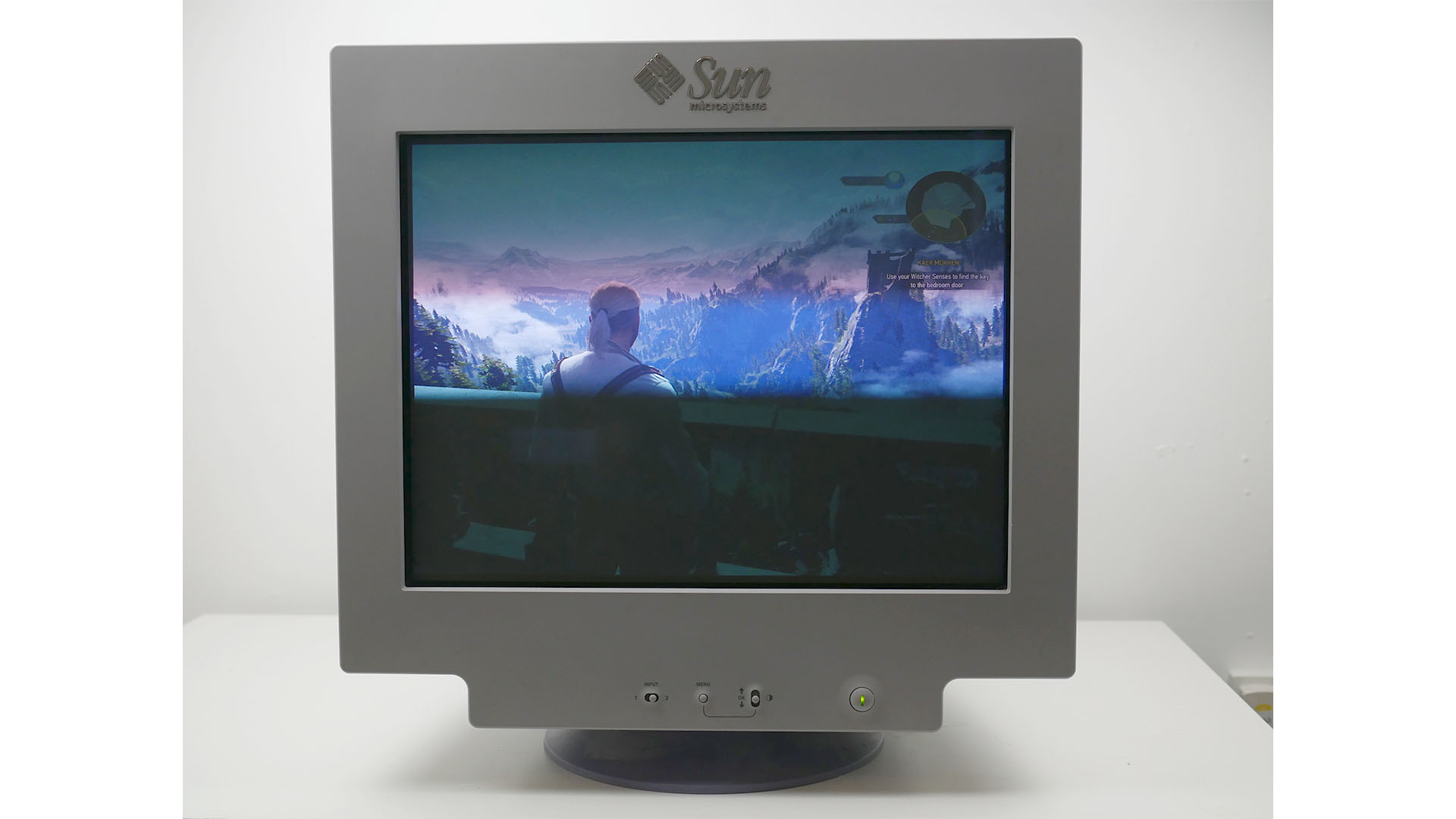
The way images are produced on a CRT means that at any given moment, only a small part of the screen is actually illuminated
Now, the key here is that those moments where much of a CRT’s screen is showing nothing but black trick the eye in such a way that it reduces the appearance of judder and blur in moving images. This is particularly noticeable with horizontal movement as seen in side-scrolling games like Sonic the Hedgehog or just when you look left and right in a first-person shooter. The image appears crisper and can feel more responsive, even at far lower refresh rates than modern fast LCDs.
The second advantage is that CRTs cope much better with odd and low resolutions. This is because they, to all intents and purposes, don’t have a strict native resolution. Whereas an LCD has 1,920 x 1,080 little pixels in its LCD panel, a CRT just adjusts the number of lines its beam creates and how often it turns the beam on and off to create its pixels. As such, you don’t get the problem you have with LCDs when you run games at lower resolutions where the screen has to spread a single pixel of the image across several of the screen’s pixels, often resulting in a blurry mess.
Instead, while you may get visible blank lines between the lines of the image, the image itself remains sharp. This is particularly why retro games still look so much better on CRTs. Blowing up a game that originally ran at 640 x 480 onto a 1,920 x 1,080 screen looks pretty awful on LCD – even with the best modern upscaling algorithms – but still looks sharp on a CRT.
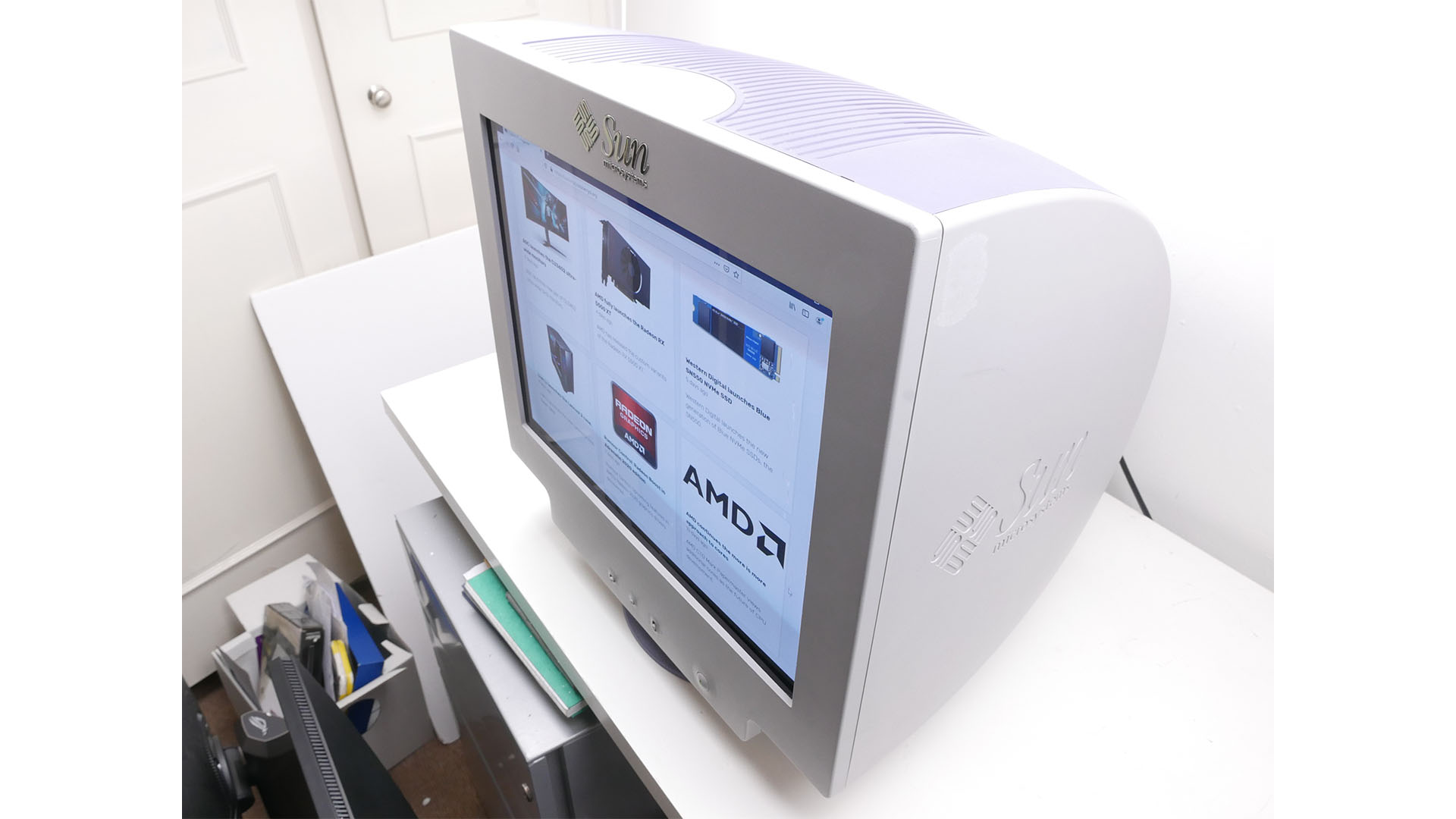
CRTs retain perfect image quality even when viewed from extreme angles
The final piece to the puzzle is viewing angles. On CRTs they are infinite – so long as you can see the screen, the image will appear as good as it does from straight on. OLEDs largely retain this same quality but LCDs – even the best ones – suffer in several ways when viewed from different angles, reducing contrast, messing with colors and more.
Getting and setting up a CRT
The biggest difficulty in trying out using a CRT is getting hold of one. None are made anymore and while they regularly come up for secondhand sale, many are smaller screens that are limited in resolution and image quality. Meanwhile, larger screens with higher resolutions, flatter front glass, and good overall image quality are highly sought after and cost a lot.
We managed to get a 21-inch Sun GDM-5510 CRT (essentially a rebranded Sony CPD-G520) a while back, which at the time cost us around $250 from eBay but prices have risen steadily and it’s potluck what price you might have to pay. Meanwhile, even larger screens can fetch well over $1,000.
The CRT display we picked up can deliver up to a 1,600 x 1,200 resolution with a vertical refresh rate of 85Hz, which may not sound all that impressive compared to modern LCD monitors that can hit over 360Hz at 1,920 x 1,080. However, due to the scanline nature of the CRT image, 85Hz should in theory be enough for a reasonably responsive-feeling gaming experience. Moreover, lowering the resolution allows for even higher frame rates of up to 120Hz.
The only other thing you should need to use a CRT with your existing PC is an HDMI to VGA adapter. Most modern graphics cards don’t include a VGA output and that’s what nearly all CRTs use. Thankfully, they’re inexpensive and readily available.
The other thing you need to account for is space. CRTs are huge, with them often being even deeper than they are wide, so you’ll likely need a desk that’s at least 80cm (32 inches) deep to allow room for a keyboard and mouse in front of the screen. They also weigh a lot, so you’ll need something with a bit of strength to get them up the stairs and onto a desk, not to mention a strong enough desk.
CRT vs LCD image quality
Once you’ve manhandled a CRT monitor onto your desk and got it set up, perhaps the first thing you’ll notice is that, unlike LCDs, the visible size of a CRT doesn’t correspond with the advertised size of the monitor. In practice, the visible size of the 21-inch screen we tested is roughly 19.5 inches, so we’re already a few steps down in visual impact from even a basic 24-inch LCD.
Nonetheless, firing the GDM-5510 up and we were immediately struck by… how much tweaking is required to get the picture setup correctly. CRTs need to have the electron beam setup for each resolution they’re run at, with options in the screen’s menu for adjusting the exact width, height, and shape (from stretching out the image into a barrel shape or squeezing it in) so that the image looks straight and true while filling as much of the visible phosphor surface of the screen as possible.
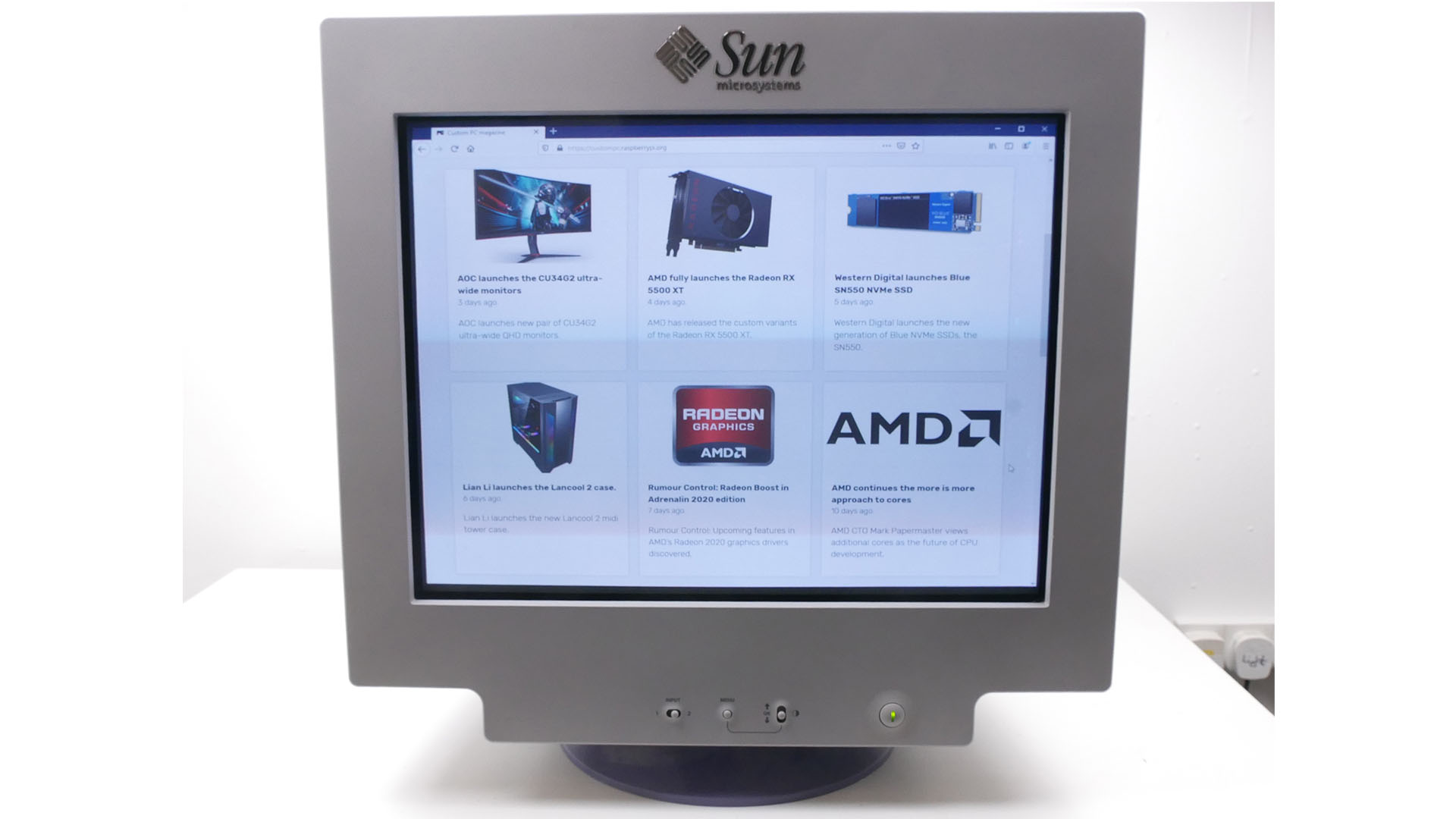
With that out the way, this 17-year-old screen put in an impressive performance. The contrast is weak but the colors look great and the image is nice and sharp. Viewing angles are also excellent such that the overall experience is an improvement in many ways compared to a cheap TN LCD screen. In practice, there are few situations where this really makes a difference but it was certainly striking just how stable the image was.
Gaming on a CRT
Next, we fired up some games, and sure enough, we were struck by how smooth the experience is. The CRT scanline effect really does work wonders for reducing motion blur, making games look and feel more responsive. It’s no wonder some modern LCD screens include a black frame insertion mode that flashes the monitor’s backlight on and off for each frame, tricking the eye into seeing a smoother image.
That said, the 85Hz limitation of this screen at full resolution was noticeable and we still preferred 240Hz and even 144Hz LCDs for first-person shooters. Your mileage may vary, though, if you particularly dislike motion blur and stutter.
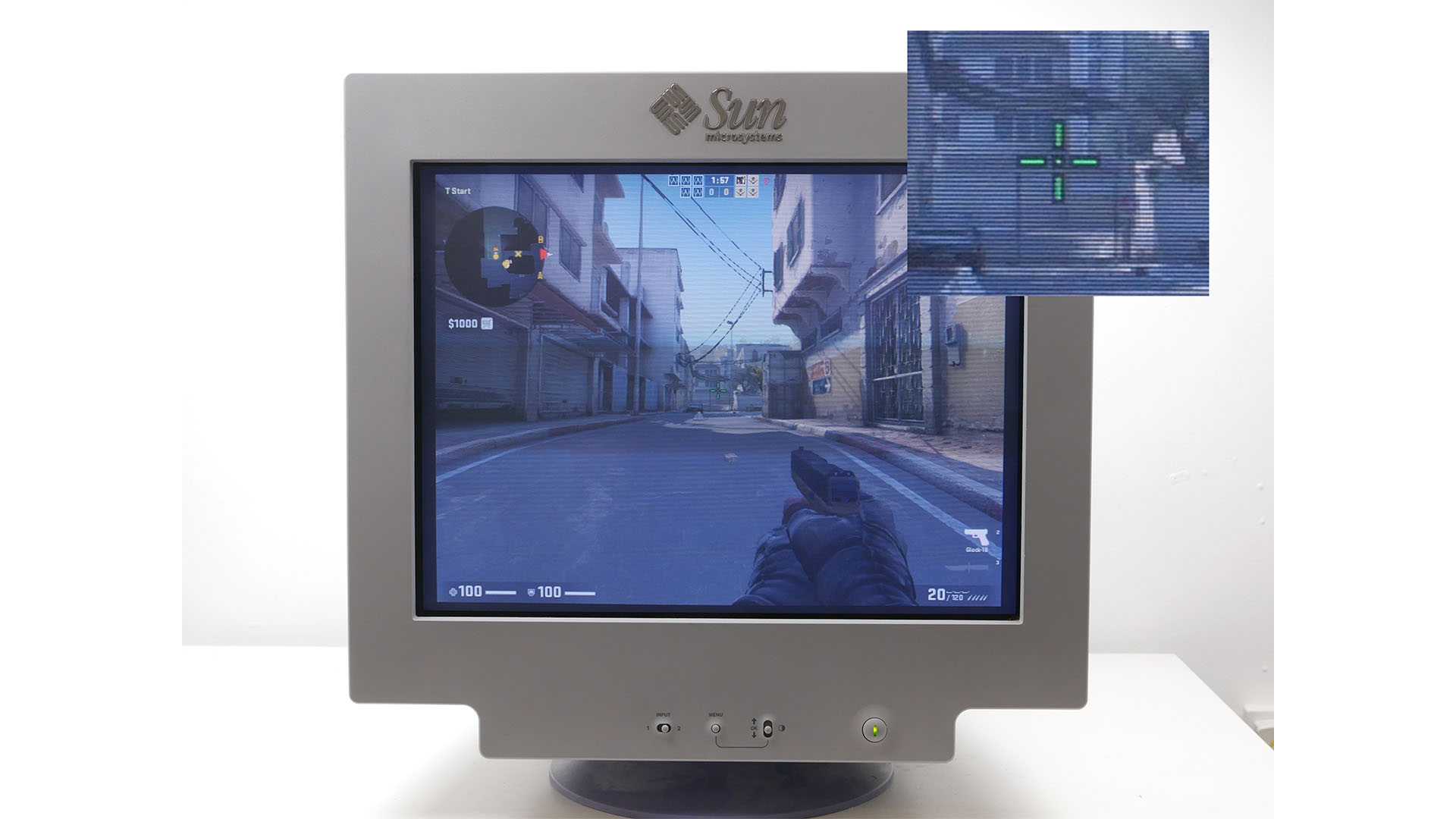
Up close you can see lines when using a CRT at low resolutions but the image still looks sharp
Next, we dialed down the resolution to just 640 x 480 and fired up a few old classics to see how the CRT did at reproducing low-resolution retro games compared to LCD screens. And the result is that while you get noticeable lines in the image that can be distracting in their own way, the image remains sharp in a way that using an upscaled image on an LCD just can’t compete with. Combined with the smoother scanline motion and the experience is truly transformative for older games designed for screens like this.
Should you buy a CRT?
Based on our experience, the choice of whether you should buy an old CRT monitor comes down to a few different factors. The first is whether you dabble in retro gaming, be that old consoles or PC games. The sharpness and smoothness that you can get on a CRT with these low-resolution games immediately elevates the experience over most LCD displays.
However, if you’re more interested in getting a CRT because you think it’ll make all your gaming experiences better and it will be your main gaming display, we strongly suggest caution. For a start, the gaming experience isn’t that much better. Run an LCD at native resolution and high refresh rate and it’s still a very nice experience for anything non-retro. And, if you really hate motion blur, the black frame insertion mode on some LCDs does a decent job of emulating the motion blur-reducing effect of scanline displays.
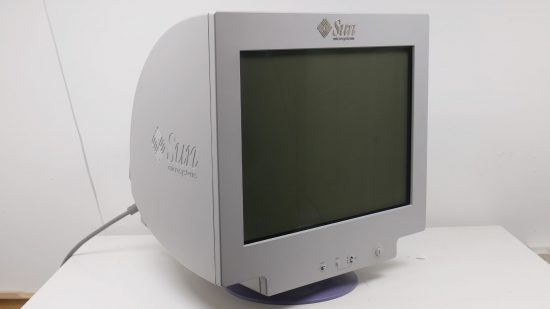
Most CRTs are as deep as they are wide – there’s a reason flat panels took over
What’s more, going back to a CRT comes with some serious compromises in screen size, resolution, and refresh rate. Most CRT monitors top out at 21 inches and use a 4:3 aspect ratio rather than widescreen, and plain and simply, we prefer widescreen for anything other than retro games. Nearly all modern video is widescreen, modern games are generally designed for widescreen, and even a lot of desktop use benefits from it.
There’s also the fact that the image quality isn’t that amazing outside of the smooth motion and sharp low-resolution image. Just as with the gaming experience, run a modern LCD (not to mention OLED) screen at native resolution and you’re getting a sharper, flatter, higher-contrast image that generally these days also includes an extended color gamut with HDR support.
What’s more, CRTs don’t go very bright and they degrade over time, so with any second-hand unit you might get now, there’s a good chance it’s well past its best and could also have a degree of image burn-in.
There’s also the sheer size and weight of CRTs to consider. It really is hard to get across just how big and heavy they are, especially if you opt for a large screen size to compete with a modern flatscreen display size.
As such, outside of having a smaller CRT for some retro fun, there’s really only one display that we would consider brings enough to the table to make a viable case for replacing a main gaming display, and that’s the Sony GDM-FW900. Widely regarded as the absolute pinnacle of CRT monitors, this 24-inch display was one of the very few to offer widescreen and could produce a Full HD, 1,920 x 1,200 resolution picture at 120Hz.
If we could get hold of one of these 42kg(!) behemoths we would be very tempted to find a home for it next to our gaming PC. The only trouble is, they don’t come cheap. Not even close. At the time of writing, on eBay there was one that had a starting bid of £1,600 ($2,000).
If rummaging around eBay for a CRT hasn’t taken your fancy, you can find our pick of the best normal LCD monitors in our best gaming monitor guide. Our current top all-round choice is the LG Ultragear 27GP850-B, which offers a 27-inch screen size – bigger than any CRT monitor you’ll find – a 2,560 x 1,440 resolution and 165Hz refresh rate all while offering great image quality, including an extended color range for HDR. For just $399, that’s probably a better option for most people than a $2,000 CRT!
Have you experimented recently with CRTs, or have you held on to your old one for all this time? We’d love to hear your stories of your trials and tribulations, and to know just where you found space to keep them! Let us know your thoughts on the Custom PC Facebook page, via Twitter, or join our Custom PC and Gaming Setup Facebook group and tap into the knowledge of our 390,000+ members.
